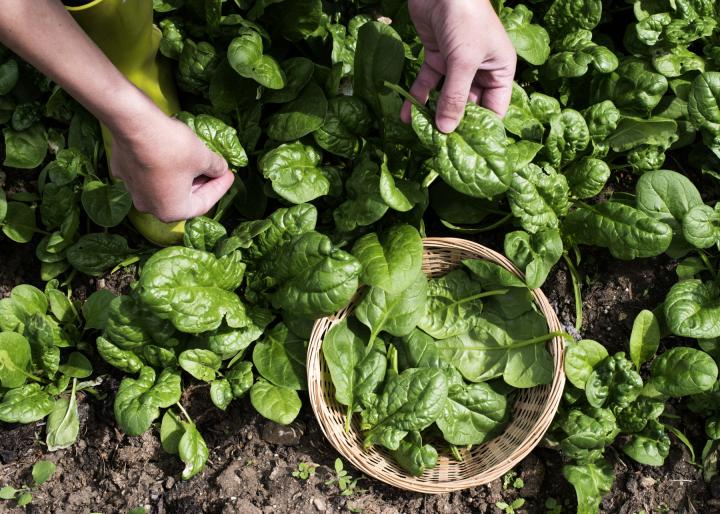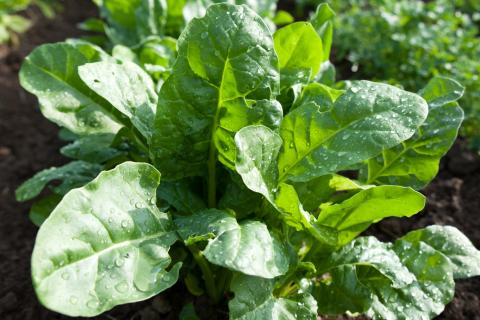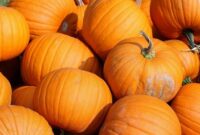Spinach, a super–cold-hardy leafy green, is a popular crop that can be planted in very early spring, as well as in fall and even winter in some areas. Learn more about planting and growing nutritious spinach in your home garden.
About Spinach
Spinach has similar cool-season growing conditions and requirements as lettuce, but it is more versatile in both its nutrition and its ability to be eaten raw or cooked. It is higher in iron, calcium, and vitamins than most cultivated greens, and one of the best sources of vitamins A, B, and C.
Spinach tolerates full sun to light shade; prepare soil about a week before planting by mixing in compost. Alternatively, prepare the soil in late summer or early fall, when spinach can also be sown where winters are mild.
When to Plant Spinach
- Spinach requires 6 weeks of cool weather from seeding to harvest, so sow seeds directly into the soil as soon as the ground warms to 40°F. (Cover the soil with black plastic to speed its warming.)
- Although seeds can be started indoors, it is not recommended, as seedlings are difficult to transplant.
- Gardeners in northern climates can harvest early-spring spinach if it’s planted just before the cold weather arrives in fall. Protect the young plants with a cold frame or thick mulch through the winter, then remove the protection when soil temperature in your area reaches 40ºF in spring. Remove the mulch to harvest some spinach then replace the mulch.
- To distract leaf miners, sow radish seeds in alternate rows. Leaf miner damage to radish tops does not affect their root growth.
- Common spinach cannot grow in midsummer. (For a summer harvest, try New Zealand Spinach or Malabar Spinach, two similar leafy greens that are more heat tolerant.)
- For a fall crop, re-sow in mid-August when the soil is no warmer than 70°F.
How to Plant Spinach
- Sow seeds 1/2 of an inch deep every 2 inches and cover with 1/2 inch of soil.
- Plant in rows 12 to 18 inches apart or sprinkle over a wide row or bed.
- Sow every couple of weeks during early spring for a continuous harvest.
-
Water spinach to keep soil constantly moist.
- Use row covers to maintain cool soil and deter pests.
- When seedlings sprout to about 2 inches, thin them to 3-4 inches apart. You can eat the thinnings.
- Beyond thinning, no cultivation is necessary. Roots are shallow and easily damaged.
- Water regularly and mulch to retain moisture.
- When plants reach one-third of their growth, side-dress with a high-nitrogen fertilizer, as needed. Nutrient deficiencies may appear as yellow or pale leaves, stunted or distorted growth, a purpling or bronzing of leaves, leaves dropping early, or other symptoms.
- In early spring and late fall: Spinach can tolerate the cold; it can survive a frost and temps down to 15ºF (-9°C). (See local frost dates) Young spinach is more tender; cover if cold temps are in the forecast.
- Leaf Miners
- Bolting
- Leaf Spot
- Cercospora
There are four main types of spinach suited for spring and fall plantings.
- Baby-leaf style spinach is tender, with small-size leaves. The variety ‘Baby’s Leaf’ is good for containers; ‘Catalina’ is heat-tolerant and resistant to downy mildew.
- Savoy spinach has curly, crinkled, dark-green leaves, e.g. ‘Bloomsdale.’ The ‘Winter Bloomsdale’ variety is a crinkled-leaf, fall variety, tolerant to mosaic viruses.
- Semi-Savoy has slightly crinkled leaves and can be difficult to seed. ‘Melody’ is resistant to cucumber mosaic virus and downy mildew; mildew-resistant ‘Remington’ will grow in spring, summer, or fall; ‘Tyee’ can be planted in spring or fall, and is resistant to downy mildew.
- Smooth- or flat-leaf (also called plain leaf) varieties have spade-shape leaves. ‘Giant Nobel’ is a plain leaf variety and an heirloom that is slow to bolt; ‘Nordic IV’ is bolt-resistant.
- Malabar Spinach (Basella alba), a vine, and New Zealand Spinach (Tetragonia tetragonoides), a perennial, are two heat-tolerant leafy greens that resemble common spinach; both are heat-tolerant. Grow them in the summer, when common spinach can’t take the heat.
-
Harvest a few outer leaves from each plant (so that inner leaves can develop) when leaves reach desired size, or harvest the entire plant, cutting the stem at the base.
- Don’t wait too long to harvest or wait for larger leaves. Bitterness will set in quickly after maturity. Be aware of day length and heat: Increasing daylight (about 14 hours or longer) and warmer seasonal temperatures can cause spinach to bolt (develop a large stalk with narrower leaves and buds/flowers/seeds), which turns leaf taste bitter.
- If spinach starts to bolt, pull the plant and use the leaves. Or try to slow the bolting: Pinch off the flower/seed heads, keep the soil moist, and provide shade.
 Harvesting spinach. Photo by Deyan Georgiev/Shutterstock.
Harvesting spinach. Photo by Deyan Georgiev/Shutterstock.
Storing Spinach
Fresh spinach leaves are good up to a week. Too much moisture hastens its demise. So store fresh spinach unwashed and don’t wash until ready to use. Pat dry with a paper towel and put in a freezer bag with the towel to absorb moisture.
Given its short shelf life, spinach is perfect for freezing. Wash, trim off ends and yellowing leaves, blanch, and pack into freezer bags. See how to freeze spinach.
- Phenology, the study of signs, suggests planting spinach when crocuses are blooming.
- Similarly, in areas where lilacs grow, old-time farmers say to plant spinach when lilacs are in first leaf.
- Scatter spinach or lettuce seeds around emerging bulb foliage to make wise use of your garden space, and have a leafy green crop at the ready to cover the bare spots left by deadheaded spring flowers.
- A pinch of baking soda in the cooking water keeps spinach greener.
- Refresh wilted spinach by placing it in a bowl of ice water for a few minutes before using it.
- Spinach boosts your brainpower, but it can hinder iron absorption. For better absorption of iron, eat spinach with orange slices.
- Raw, young spinach is best in salads and smoothies; more mature spinach is excellent sautéed in heated olive oil.
- Embrace your leafy greens! Learn more about the health benefits of going green!




